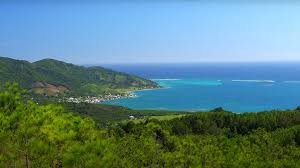A Brief History of Guanaja Island
Long before European contact, Guanaja was inhabited by the Paya people (also known as the Pech), a peaceful coastal civilization skilled in fishing, farming, and trading with neighboring Mesoamerican cultures. The island’s rich marine life, fertile valleys, and natural freshwater springs made it a vital stop along ancient canoe trade routes that connected the mainland to the other Bay Islands.
In 1502, Christopher Columbus arrived on Guanaja during his fourth and final voyage to the New World. Landing on what he called Isla de los Pinos (Island of Pines), he was struck by its lush forests and clear waters — the first time Europeans encountered the Bay Islands. From here, Columbus continued along the Central American coast, marking Guanaja as a gateway between the Old and New Worlds.
Over the centuries, Guanaja remained a quiet refuge — untouched by large-scale colonization and development that transformed nearby Roatán and Utila. Today, it retains that same authenticity. With only a few small settlements, no crowded resorts, and limited road access, the island offers a rare blend of raw natural beauty, rich cultural heritage, and low-key tourism. Visitors find a serene escape where diving, eco-adventure, and simplicity define life.





